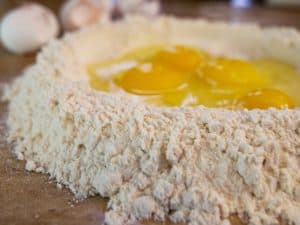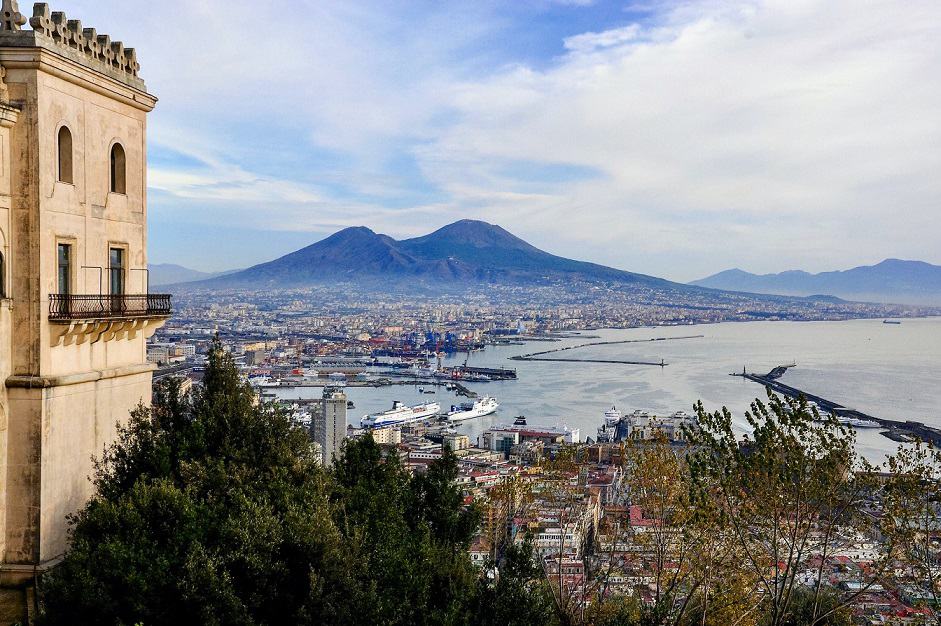Neapolitan cuisine is one of the most beloved and influential food cultures in the world. From the iconic pizza to the rich seafood dishes, Neapolitan cuisine has captured the hearts of people from all corners of the globe. But how did this humble cuisine from Southern Italy become such a global phenomenon?
In this article, we will explore the origins of Neapolitan cuisine — one of the global cuisines featured on our Secret Food Tours — its most famous dishes, and how it has evolved over time to become the culinary powerhouse it is today.
The Origins of Neapolitan Cuisine
Neapolitan cuisine has a long and rich history, shaped by centuries of cultural influences and culinary traditions. The early influences of Greek and Roman cuisine can still be seen in many Neapolitan dishes today, such as the use of olive oil and fresh herbs.

The Arab conquest of Sicily in the 9th century brought new ingredients and techniques to the region, including sugar, citrus fruits, and spices like cinnamon and saffron. These early influences continue to shape Neapolitan cuisine today, with many dishes featuring a unique blend of sweet and savory flavors.
Naples was also a major port city, which allowed for the exchange of culinary traditions with other cultures. In the 16th century, Naples became the capital of the Kingdom of Naples, which included much of Southern Italy. This led to an influx of new ingredients and culinary techniques from other regions of Italy. The result was a cuisine that was both uniquely Neapolitan and influenced by the wider Mediterranean world.
Today, Neapolitan cuisine is known for its fresh ingredients and rustic simplicity. It is a cuisine that celebrates the bounty of the land and sea, and the joy of sharing food with loved ones.
Pizza and Beyond

Perhaps the most famous of all Neapolitan dishes is the modern pizza. Originating in Naples in the 18th century, pizza quickly became a staple food for the city’s working-class population. Today, pizza is enjoyed all over the world, with many people considering Neapolitan-style pizza to be the gold standard.
But Neapolitan cuisine is much more than just pizza. Other famous dishes include spaghetti alle vongole (spaghetti with clams), eggplant parmigiana, and the hearty meat ragù known as Neapolitan ragù. These dishes are characterized by their bold flavors, simple preparation, and use of fresh, locally sourced ingredients.
Neapolitan cuisine also has a strong tradition of seafood dishes. The city’s location on the Bay of Naples means that fresh fish and shellfish are abundant. Some of the most famous seafood dishes include zuppa di pesce (fish soup) and spaghetti con le cozze (spaghetti with mussels).
The Art of Pasta Making

Pasta is a cornerstone of Neapolitan cuisine, and the traditional methods of making pasta in Naples are still used today. The high-quality ingredients and attention to detail make Neapolitan pasta some of the best in the world. From the simple yet delicious spaghetti aglio e olio (spaghetti with garlic and oil) to the more complex lasagna, Neapolitan pasta dishes are a true delight for the senses.
The key to making great Neapolitan pasta is to use high-quality ingredients and to pay attention to every step of the process. The pasta dough is made with flour, water, and sometimes eggs, and is kneaded until it is smooth and elastic. It is then rolled out and cut into various shapes, depending on the dish being prepared.
One of the most famous Neapolitan pasta dishes is spaghetti alla puttanesca, which is made with tomatoes, olives, capers, and anchovies. This dish is a testament to the bold flavors and simple preparation that characterize Neapolitan cuisine.
The Importance of Local Ingredients
One of the defining characteristics of Neapolitan cuisine is the use of locally sourced ingredients. From the fresh seafood caught in the Bay of Naples to the ripe tomatoes grown on the slopes of Mount Vesuvius, Neapolitan cuisine relies on the bounty of the region’s fertile land and waters.

Other ingredients unique to the region include buffalo mozzarella, San Marzano tomatoes, and the spicy pepperoncino. These ingredients are used in a variety of Neapolitan dishes, from pizza to pasta to seafood dishes.
The use of local ingredients is not just a matter of tradition or taste, but also of sustainability. By using locally sourced ingredients, Neapolitan cuisine supports local farmers and fishermen, and helps to preserve the region’s unique culinary heritage.
Street Food Culture in Naples
Naples is known for its vibrant street food culture, with a variety of delicious and affordable snacks available on every corner. From the classic pizza fritta (fried pizza) to the sweet and sticky sfogliatella (a pastry filled with ricotta cheese and candied fruit), Neapolitan street food is a true feast for the senses.
Many of these dishes have their origins in the city’s working-class neighborhoods, where people would gather in the streets to share food and conversation. Some of the most famous street food dishes include arancini (deep-fried rice balls filled with cheese or meat), cuoppo (a cone-shaped paper filled with fried seafood), and zeppole (a type of fried doughnut).
The Influence of Immigration
Like many other culinary traditions, Neapolitan cuisine has been shaped by waves of immigration over the years. Immigrants from other regions of Italy and beyond have brought new ingredients and cooking techniques to Naples, resulting in a rich and diverse culinary landscape.
Some of the most famous dishes with immigrant origins include spaghetti alla puttanesca (spaghetti with tomato sauce, olives, capers, and anchovies) and the popular street food arancini. These dishes are a testament to the openness and adaptability of Neapolitan cuisine, which has always been willing to embrace new flavors and influences.
Neapolitan Cuisine Goes Global
In recent years, Neapolitan cuisine has become increasingly popular around the world, with many restaurants specializing in traditional Neapolitan dishes. From New York to Tokyo, people are falling in love with the bold flavors and fresh ingredients that define Neapolitan cuisine.
Some of the most famous Neapolitan restaurants outside of Italy include Pizzeria Bianco in Phoenix, Arizona, and L’Antica Pizzeria da Michele in London, England. These restaurants are a testament to the enduring appeal of Neapolitan cuisine, and its ability to capture the hearts and taste buds of people all over the world.
Neapolitan Cuisine in the Modern Era
As with any culinary tradition, Neapolitan cuisine has evolved over time to reflect changing tastes and preferences. In recent years, there has been a rise in fusion cuisine, with chefs combining traditional Neapolitan ingredients with flavors and techniques from other culinary traditions.
While some purists may lament these changes, others see them as a natural evolution of a cuisine that has always been open to new influences. Whether you prefer traditional Neapolitan dishes or the latest fusion creations, there is no denying the enduring appeal of this beloved cuisine.
In conclusion, Neapolitan cuisine is a true culinary treasure, with a rich history and a vibrant present. From the iconic pizza to the hearty meat ragù, Neapolitan dishes are beloved by people all over the world. But what makes Neapolitan cuisine so special? It’s the combination of fresh, locally sourced ingredients, time-honored cooking techniques, and a willingness to embrace new flavors and influences.
Whether you’re a lifelong fan of Neapolitan cuisine or a newcomer to its many delights, there’s never been a better time to explore all that this amazing culinary tradition has to offer.
